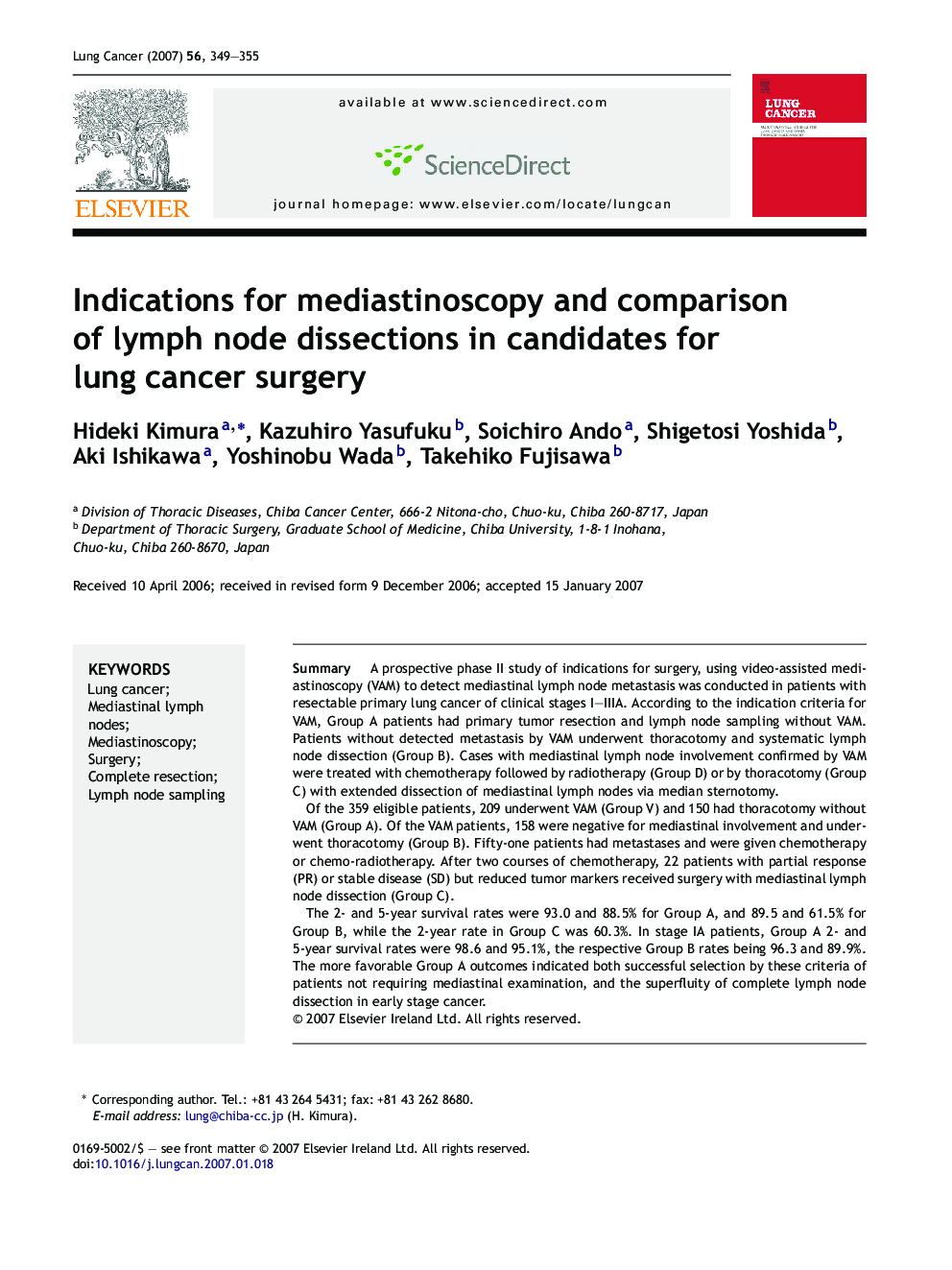| Article ID | Journal | Published Year | Pages | File Type |
|---|---|---|---|---|
| 2143904 | Lung Cancer | 2007 | 7 Pages |
SummaryA prospective phase II study of indications for surgery, using video-assisted mediastinoscopy (VAM) to detect mediastinal lymph node metastasis was conducted in patients with resectable primary lung cancer of clinical stages I–IIIA. According to the indication criteria for VAM, Group A patients had primary tumor resection and lymph node sampling without VAM. Patients without detected metastasis by VAM underwent thoracotomy and systematic lymph node dissection (Group B). Cases with mediastinal lymph node involvement confirmed by VAM were treated with chemotherapy followed by radiotherapy (Group D) or by thoracotomy (Group C) with extended dissection of mediastinal lymph nodes via median sternotomy.Of the 359 eligible patients, 209 underwent VAM (Group V) and 150 had thoracotomy without VAM (Group A). Of the VAM patients, 158 were negative for mediastinal involvement and underwent thoracotomy (Group B). Fifty-one patients had metastases and were given chemotherapy or chemo-radiotherapy. After two courses of chemotherapy, 22 patients with partial response (PR) or stable disease (SD) but reduced tumor markers received surgery with mediastinal lymph node dissection (Group C).The 2- and 5-year survival rates were 93.0 and 88.5% for Group A, and 89.5 and 61.5% for Group B, while the 2-year rate in Group C was 60.3%. In stage IA patients, Group A 2- and 5-year survival rates were 98.6 and 95.1%, the respective Group B rates being 96.3 and 89.9%. The more favorable Group A outcomes indicated both successful selection by these criteria of patients not requiring mediastinal examination, and the superfluity of complete lymph node dissection in early stage cancer.
